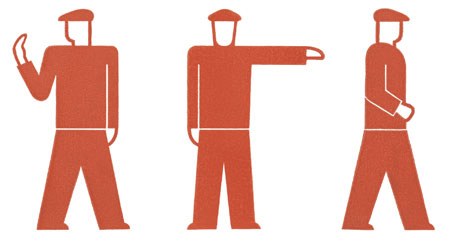'Isotype: international picture language' now open
December 2010
We were pleased to celebrate the opening of Isotype: international picture language on the evening of Friday 10 December at the Victoria & Albert Museum.
The private view was attended by His Excellency Dr Emil Brix, Austrian Ambassador to the United Kingdom, and Dr Elisabeth Brix, and by many friends and supporters of 'Isotype revisited'. Speeches of welcome were given by Beth McKillop, Deputy Director and Director of Collections at the V&A, and by Professor Tony Downes, Deputy Vice Chancellor of the University of Reading. The evening was also kindly supported by the Austrian Cultural Forum London.
--
The display traces the story of Isotype over four decades, and is made up of 12 sections.
Introduction
Isotype principles, creators
Society and economy
Pictograms, charts and publications made at or for the Social and Economic Museum of Vienna, 1925 to 1934
Sociological graphics
'Free work' by members of the 'Group of Progressive Artists' including Gerd Arntz, Peter Alma, Augustin Tschinkel and Franz Wilhelm Seiwert, 1920s
Picturing Soviet progress
Pictorial statistics and publications made by the Izostat Institute, 1931 to 1934
Around Rembrandt
Charts and publication for the exhibition 'Around Rembrandt' (Rondom Rembrandt), 1938
Basic texts
International picture language and Basic by Isotype, 1936 and 1937
Health, knowledge and modern man
Work in the United States for the National Tuberculosis Association, Compton's pictured encyclopedia, and Otto Neurath's Modern man in the making, 1930s
War and the home front
Wartime contributions to books and films in Britain, 1941 to 1945
Explaining a new society
Contributions to books (mainly) on postwar social reconstruction in Britain, 1940s
Knowledge for young people
Series of books for young people on science, history and technology subjects, 1947 to 1960s
Isotype beyond the West
Work in British colonial West Africa (Nigeria), 1950s
Before Isotype
Examples from Otto Neurath's collection of historical graphic material, 17th to 19th centuries
--
The display is on until Sunday 13 March 2011. Do visit!




